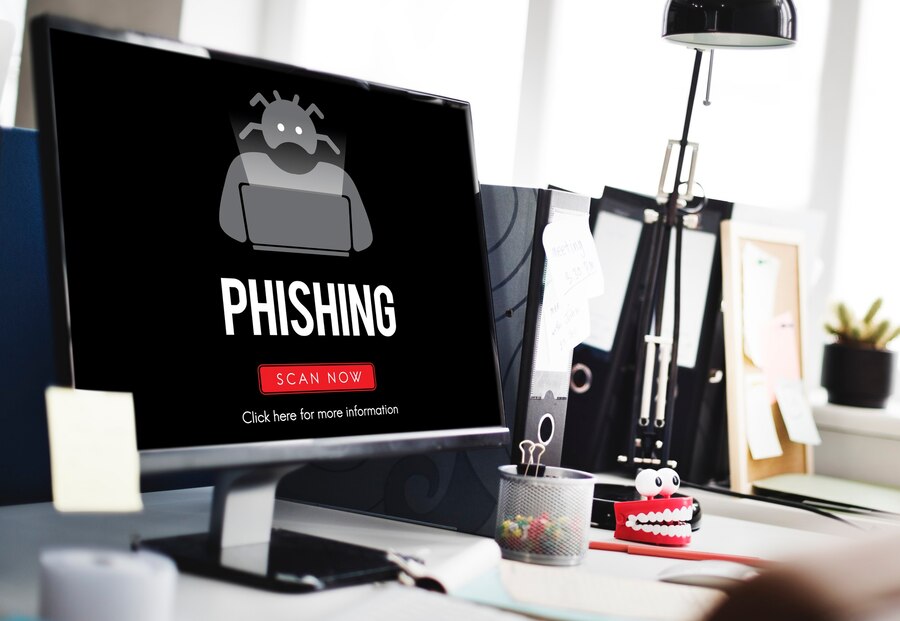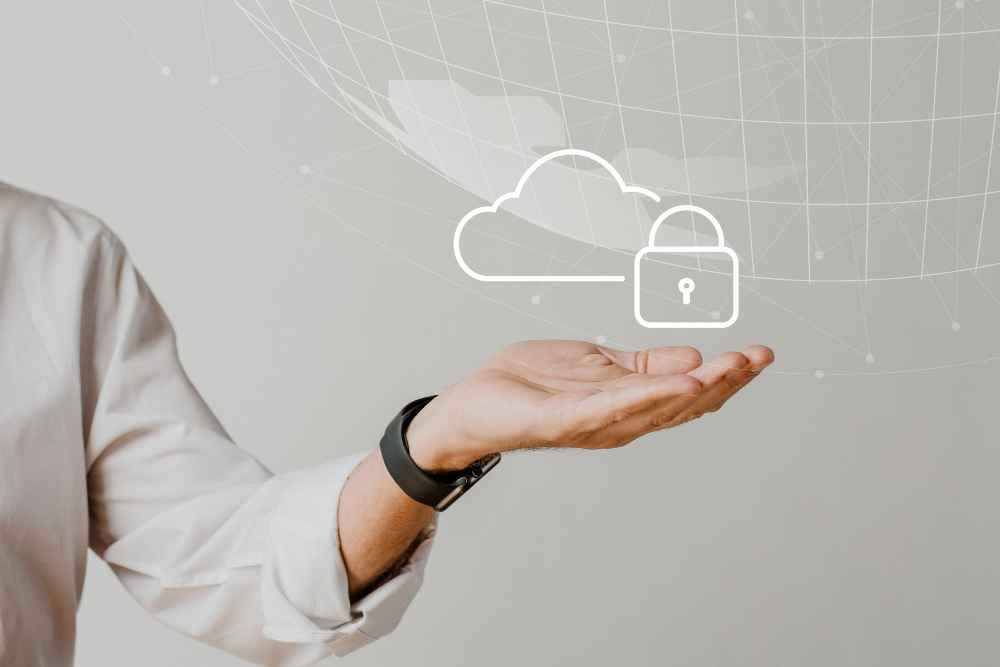Navigating the Murky Waters of Phishing Attacks in Cyber Security: Stay Sharp and Secure!
Protect your digital life! Learn about phishing attacks in cyber security – what they are, how to spot them, and how to stay safe. Dive into this comprehensive guide now!
Introduction
In the fast-paced, interconnected world of today, cyber threats loom around every virtual corner. Among these, the dreaded "phishing attack in cyber security" stands as one of the most cunning and persistent adversaries. With hackers continuously honing their deceptive tactics, it's vital to stay one step ahead to safeguard your digital existence.
This comprehensive guide will lead you through the treacherous waters of phishing attacks in cyber security, equipping you with the knowledge and tools to recognize and fend off these online predators effectively. So, let's embark on this journey to become cyber-sleuths, uncovering the secrets of phishing attacks while having some fun along the way!
Understanding the Beast: What is a Phishing Attack?
Phishing attacks are like sly digital con artists. They disguise themselves as trustworthy entities to trick you into revealing sensitive information or downloading malicious files. But before we dive deeper into this treacherous realm, let's answer the first crucial question:
What Exactly is a Phishing Attack?
A phishing attack is a deceptive online ploy wherein cybercriminals impersonate legitimate entities or individuals, such as banks, email providers, or even your coworkers or friends, to manipulate you into divulging personal information, such as login credentials, credit card details, or Social Security numbers. These attacks come in various forms, but they all share a common goal: exploiting your trust for nefarious gains.
The Phishing Arsenal: Different Types of Attacks
Phishing attackers have an extensive toolbox of tricks to ensnare unsuspecting victims. Let's explore the diverse array of phishing attacks they employ to keep you on your toes!
1. Email Phishing: The Classic Trickster
In the realm of cyber security, email phishing is a tried-and-true favorite of malicious actors. The typical scenario involves receiving an email that seems legitimate, but it's a ruse! The goal is to manipulate you into revealing sensitive information or downloading malware.
Spotting Email Phishing: The Telltale Signs
- Generic Greetings: Legitimate organizations will use your name.
- Suspicious URLs: Hover over links to reveal their true destination.
- Urgent Requests: Fraudsters often create a sense of urgency to make you act without thinking.
2. Spear Phishing: Precision Strikes
Spear phishing takes the classic email attack to the next level by tailoring the bait to a specific individual or organization. The attacker's goal is to impersonate someone you know and trust.
Spotting Spear Phishing: The Red Flags
- Personal Information: If the email contains intimate details, be skeptical.
- Odd Requests: Verify unusual requests with the supposed sender via a different channel.
- Misleading Sender Addresses: Scrutinize email addresses closely for subtle differences.
3. Vishing: Phishing by Voice
Vishing, or voice phishing, is the auditory counterpart of email phishing. Attackers impersonate legitimate entities over the phone, often posing as bank representatives or government officials.
Detecting Vishing Scams: Key Clues
- Caller ID Spoofing: Don't rely solely on caller ID for authenticity.
- Requests for Sensitive Info: Be cautious when asked for personal data over the phone.
- Call Back: Verify the caller's identity through official channels.
4. SMS and Text Phishing: Sneaky Short Messages
Text messages are also a prime avenue for phishing attacks. You might receive an SMS that appears to be from a reputable source, but it's a trap!
Unmasking SMS Phishing: Top Indicators
- Unsolicited Messages: If you didn't expect the message, approach with caution.
- Misspellings and Grammatical Errors: Phishing texts often contain typos.
- Odd Links: Verify the destination before clicking.
The Anatomy of a Phishing Attack: How it Works
Now that we know what phishing attacks are and their various forms, let's unravel the intricate web of how these schemes unfold.
Step 1: The Bait
Phishing begins with an enticing lure. Attackers craft convincing messages that mimic trusted sources, creating a false sense of security.
Step 2: The Hook
Once the bait is set, cybercriminals deploy their hooks – malicious links or attachments. Clicking or downloading these is akin to stepping into a digital bear trap.
Step 3: The Catch
After taking the bait, your sensitive information is what the attacker truly covets. This could be login credentials, credit card numbers, or personal details. The catch is in the form of data you unwittingly release.
Step 4: The Escape
To complete the attack, phishers often disappear into the digital shadows, leaving victims vulnerable to identity theft, financial loss, or further cyberattacks.
How to Protect Yourself: Staying One Step Ahead of Phishers
Now that we've delved into the world of phishing attacks, it's time to learn how to defend yourself effectively. Arm yourself with the knowledge and tools necessary to outsmart these cunning digital tricksters!
1. Educate Yourself: Knowledge is Power!
The first and most crucial step in defending against phishing attacks is educating yourself and your team. Awareness is your strongest weapon.
Tips for Staying Informed:
- Stay updated on the latest phishing trends and tactics.
- Train your employees or family members to recognize phishing attempts.
- Encourage a culture of skepticism – trust, but verify.
2. Email Filtering and Authentication
Email is the primary medium for phishing attempts, so fortify your email defenses.
Key Strategies:
- Implement robust email filtering and anti-phishing solutions.
- Leverage email authentication protocols like DMARC, DKIM, and SPF to verify sender legitimacy.
- Set up rules to flag or block suspicious emails automatically.
3. Verify the Source: Don't Trust Blindly
Always verify the authenticity of the sender before taking any action.
Quick Verification Steps:
- Call the supposed sender using a verified phone number or email, not the one provided in the suspicious message.
- Don't trust contact information within the suspicious message; use trusted channels to double-check.
4. Keep Software Up to Date: Patch the Leaks!
Outdated software can be a gateway for phishing attacks. Ensure all your software and applications are up to date.
Maintenance Tips:
- Enable automatic updates for your operating system and software.
- Regularly check for security patches and updates.
- Uninstall unnecessary applications to reduce your attack surface.
5. Use Multi-Factor Authentication (MFA): Double Down on Security!
Multi-factor authentication adds an extra layer of protection to your online accounts.
MFA Advantages:
- Even if phishers have your password, they won't access your account without the additional authentication factor.
- Use MFA for email, banking, and other sensitive accounts.
6. Report Suspected Attacks: Be a Cyber Hero!
If you spot a phishing attempt, report it to the relevant authorities or your organization's IT department.
The Power of Reporting:
- Reporting helps authorities track and combat phishing campaigns.
- Your report might prevent others from falling victim to the same attack.
Conclusion: Stay Sharp and Secure!
In the ever-evolving landscape of cyber threats, phishing attacks remain a formidable adversary. But armed with the knowledge gained from this guide, you can confidently navigate the murky waters of the digital world.
Remember, phishing attackers prey on trust, but you can outsmart them by staying informed, keeping your software up to date, using multi-factor authentication, and reporting suspicious activity. By maintaining a healthy dose of skepticism and adopting robust security practices, you can keep yourself, your data, and your digital identity safe from the clutches of the cunning "phishing attack in cyber security."
So, go forth and surf the internet with confidence, for you are now a savvy cyber-sleuth, ready to thwart any phishing scheme that comes your way. Happy surfing, and stay safe!
Share This Post
Related Articles
Explaining Two-Factor Authentication (2FA): Strengthening Online Security
Discover the vital concept of Two-Factor Authentication (2FA) and its role in enhancing online security. Learn how 2FA works, its benefits, and its applications in modern digital environments.
Common Cybersecurity Issues That Organizations Face
In today's interconnected digital landscape, cybersecurity has become paramount for businesses of all sizes. As technology advances, so do the tactics of cybercriminals. Organizations must be vigilant and proactive in safeguarding their sensitive information and digital assets. In this article, we'll delve into the common cybersecurity issues that organizations face, exploring their implications and suggesting strategies to mitigate these threats.
Cloud Security
Cloud security is the practice of protecting data, applications, and infrastructure from cyberattacks and unauthorized access in the cloud. Cloud security requires a shared responsibility model between the cloud service provider and the customer, as well as the implementation of security controls, policies, and best practices. Cloud security can help organizations achieve compliance, scalability, and cost-efficiency in their cloud operations.
What is VPN? How It Works, Types of VPN
A VPN, or virtual private network, is a service that allows you to connect to the internet securely and privately. A VPN encrypts your data and routes it through a server in another location, making it appear as if you are browsing from that location. This can help you access geo-restricted content, protect your online privacy, and avoid censorship and surveillance.
The Dark Side of Cyber Crime: a Blog About Cyber Crime
Explore the sinister world of cybercrime in "The Dark Side Of Cyber Crime: A Blog About Cyber Crime." Learn about cybercriminals, their tactics, and how to protect yourself from digital threats.
Related FAQ
No related FAQ.
Say Hello
To Your Dream





